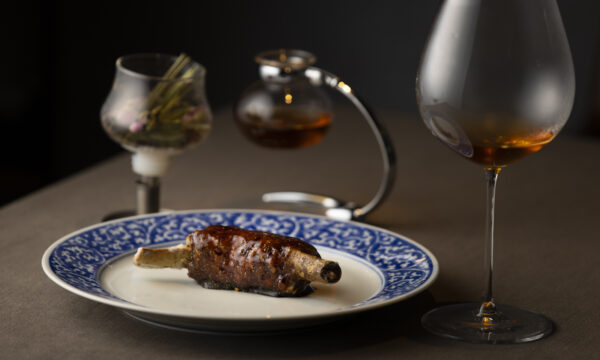
The vital power of tea, and Chinese restaurant Sazenka’s simple yet profound tea pairings (2nd half)
2020.04.03 Tea and FoodINTERVIEW
- Red Tea
- Taiwanese Tea
- Tokyo
In an old-fashioned residential neighborhood of the district of Torigoe, in Tokyo’s Taito-ku, lies the Kashiya Kokonotsu. Even amid this quiet neighborhood, it exudes an atmosphere of particular calm and refinement. Its wooden exterior is painted black, with the white cloth hung at the entrance functioning at one level as a standard noren curtain but at a deeper level as a barrier separating the outside world from the world within.

This tea salon is open by reservation only, offering special courses of wagashi (traditional Japanese sweets). Its proprietor, Miho Mizoguchi, offers monthly courses that take seasonal foodstuffs and convert them into five different wagashi dishes, all served with different teas to match each plate. Today, though, I am among a select few to be treated to an example of Mizoguchi’s “Personal Favorites” series, in which she takes one foodstuff of which she is particularly partial and builds an entire five-dish course around it.
The foodstuff Mizoguchi has selected for this first entry in her “Personal Favorites” series is the delicacy known as “karukan.” A traditional confection from Kagoshima in the south of Kyushu, karukan appears somewhat like a soft, white sponge, but has a firm elasticity and mild sweetness.
Karukan is not that familiar to most Japanese people, but despite hailing from Saitama herself, Mizoguchi’s love for this confection is deep and passionate.
“The real reason I chose karukan as the centerpiece of this course was out of a sense of deep personal frustration,” she explains. “A long time ago, Akashiya (a famous wagashi confectioner from Kagoshima, said to be the originator of karukan) announced that they were coming to Saitama, setting up in a department store there to sell their wares on a temporary basis. Naturally, I went along and saw three young women at the counter considering what to buy. First of all, they couldn’t even read the kanji for karukan, but that aside, they rejected the idea of ‘paying 200 yen for just a white blob,’ and decided that it would be better to buy chocolate instead. When they left, I followed them, and watched as, in the end, they bought macarons from a patisserie in the basement. I was so frustrated to think that they had no appreciation for the beauty of this Japanese confection and instead just wanted something fashionable and pretty. I wanted to yell at them that this simple, white blob was actually a marvel of confectionery creation, that it had depth that would keep them hooked forever! The desire to express my love of karukan to as many others as possible is what drove me to establish this new course.”
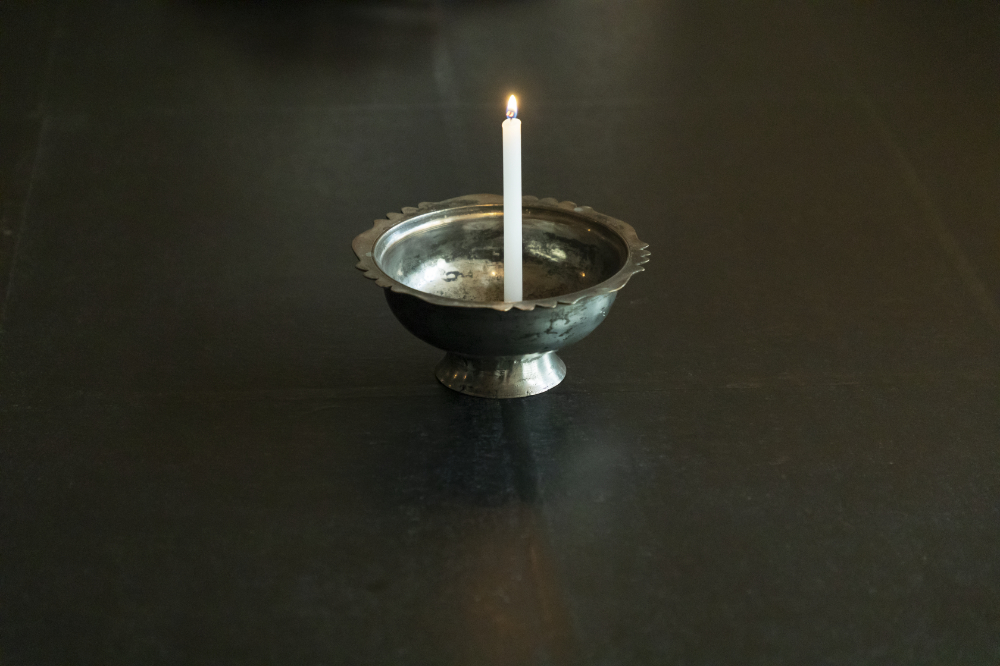
With traditional persimmon juice-dyed washi used as wallpaper and Masanobu Ando’s teaware and other antiques tastefully arranged around its edges, the room is the very picture of tranquility. But it is the unaffected naturalness of Mizoguchi’s movements and conversation that really allows her guests to relax fully. Lit by candles, the table features teaware for each diner. With elegant, flowing movements, she prepares our first cup of tea, a brown-colored brew with an aroma of fermentation.
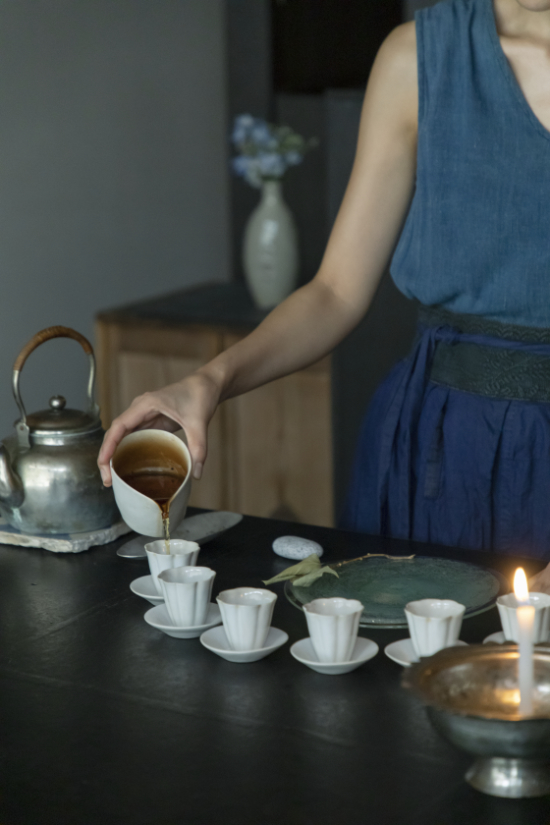
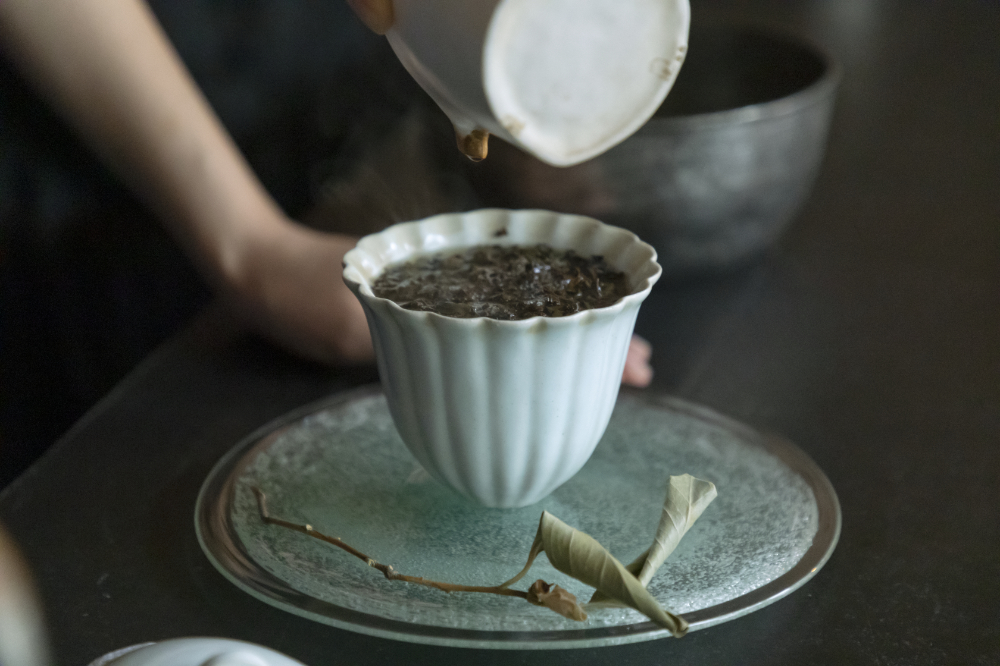
“This is a black tea from Kagoshima,” she explains. “The leaves are still just waking up in this first brew. It’s only through multiple infusions that they really come into their own.”
This first cup is an example of domestically produced black tea. Japanese black tea tends to have a mild taste with low levels of astringency, able to be imbibed straight. Mizoguchi now makes us a second brew using the same tea, demonstrating how changes in water temperature can make a difference in terms of depth and roundness of flavor, meaning that even with the same leaves, the taste can be adjusted to match one’s mood.
“It’s just finished steaming, everyone, so we’ll begin by tasting a freshly-prepared example.”
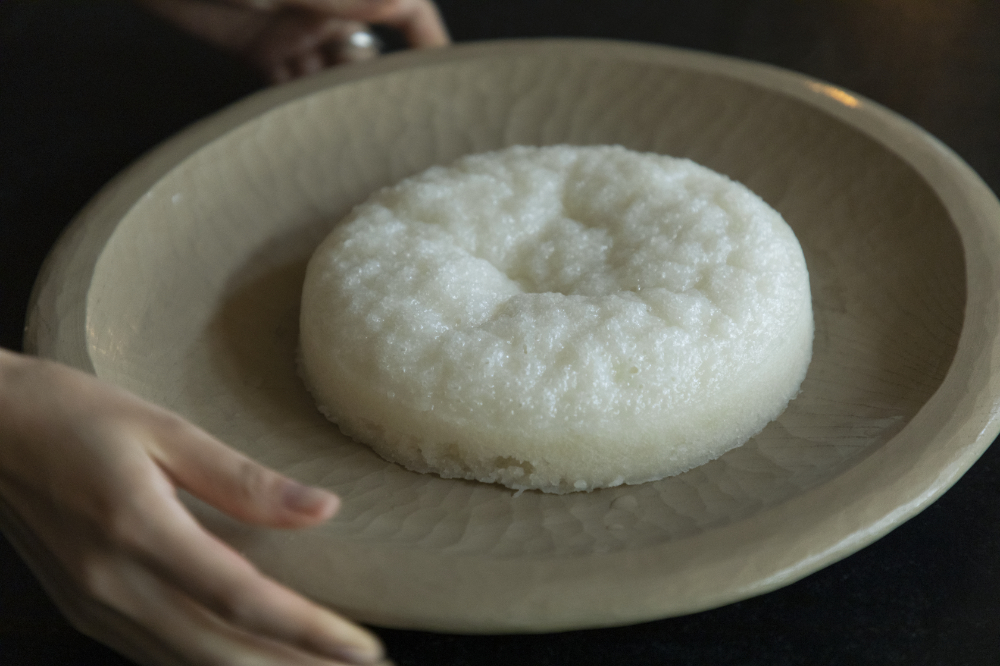
She brings out a large karukan on a white lacquered plate. Receiving my slice, I can sense the heat of the freshly-steamed concoction, together with its distinctive elastic feel, as I bring it to my mouth for my first taste. Soft and moist, it has a faint sweetness and succulence that goes down deliciously smoothly. Karukan is made using grated Japanese yam (either nagaimo or yamaimo), together with rice flour powder, sugar, and water only. Yamaimo makes for a richer and heavier final product, while nagaimo creates a karukan with a lighter, more liquidy texture. As the last of the summer heat still lingers, Mizoguchi has used nagaimo this time. Matching perfectly with the black tea, the combination of the karukan with Okinawan raw brown sugar is absolutely heavenly. In just a few moments, we are all in thrall to the karukan’s charms.
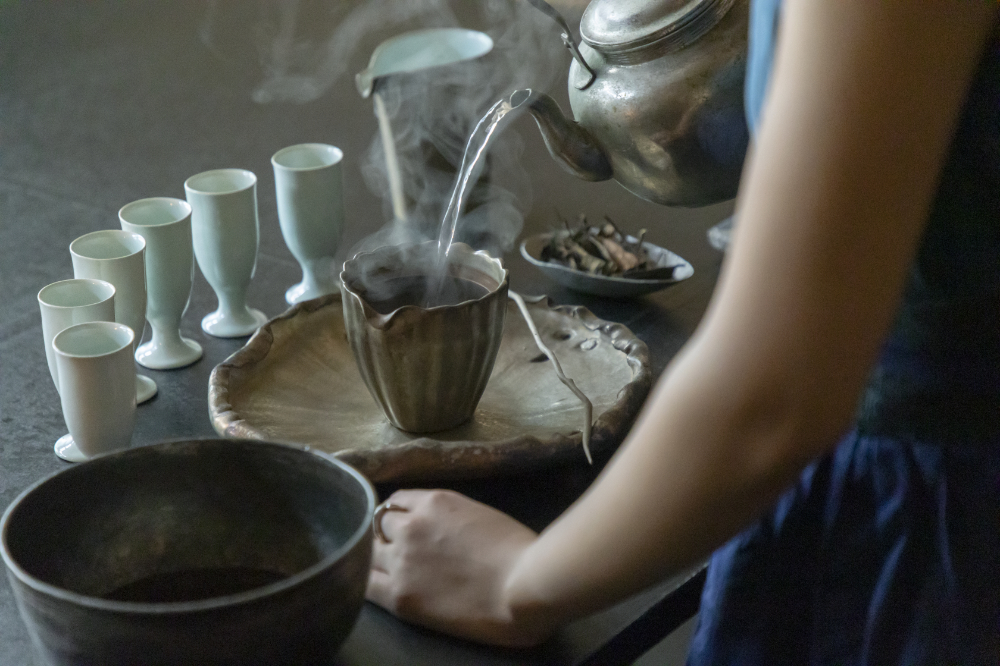
It is now time for a second type of tea. Not only do we get the chance to savor the taste from our own cups, but we can also smell the aroma of the tea leaves after each brew. This one tastes quite different from the first, with a strong aroma of fermentation.
“This is also from Kagoshima, but it is a raw pu’er tea. Its greatest characteristic is that it can be brewed over and over again. The best quality pu’er teas from China can produce 20 or more brews. These powerful tea leaves have grown strong enough to withstand both the freezing cold and the blazing sun. This particular tea has been grown using all-natural methods. I am so proud that Japan boasts tea farmers who produce such tea, and I believe it is my job as a tea missionary to use my salon to give as many people as possible the chance to savor it.”
Pu’er tea originally comes from Yunnan Province in China and is an example of post-fermented tea, which undergoes a process of microbial fermentation. Its aroma strengthens as it ages, and the tea can be stored for a long time, with many connoisseurs enjoying brews made with aged leaves in much the same way as vintage wine.
Mizoguchi brings out a dish resembling a large shortcake to accompany this tea.
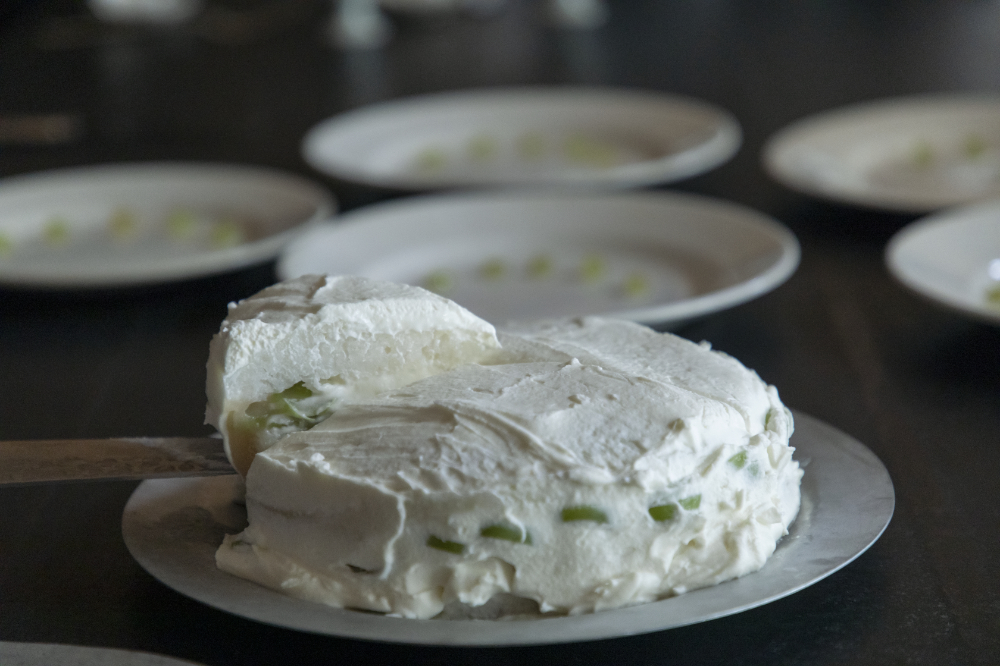
This brand new type of “cake” has been created with karukan, combined with a variety of Muscat grapes from Okayama called Genki-kun, and the light sweetness of raw cream from Iwate. Even though this taste combination is entirely new to us, we all find that it matches perfectly, and we feel like we’re eating an old favorite.
“There is also some white bean paste in there to hold things together and to provide a nice bit of texture,” Mizoguchi adds. “After eating something this sweet, your palate will be crying out for a bitterer drink, so I have made this with slightly hotter water for greater intensity of flavor.”
The lingering sweetness of the karukan cake only makes me want to take the next bite. The back-and-forth rally between it and the pu’er tea is simply addictive.
“Well then, everyone. I think it’s time for some soup.”
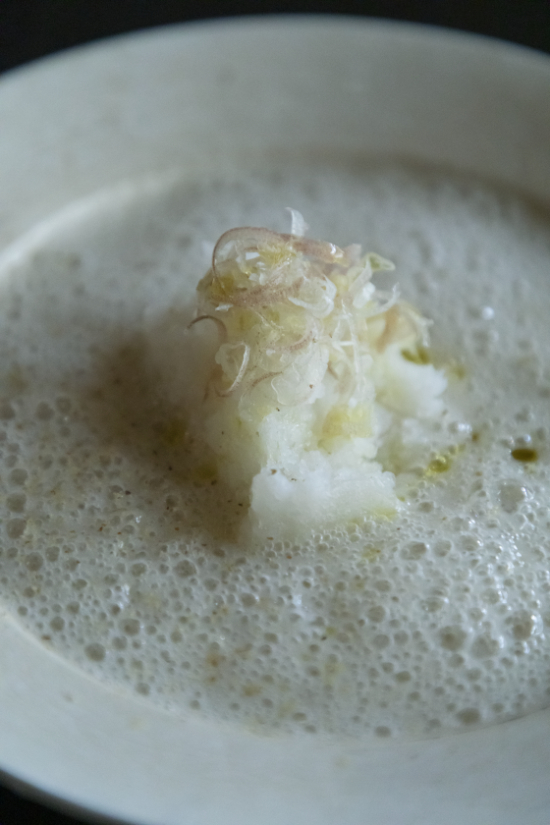
The white solid floating in the center of this frothy soup, and topped with Japanese ginger, seems at first glance to be a type of white fish, but on closer inspection is, of course, karukan. Mizoguchi has dubbed this dish Hitashi Karukan, or “soaked karukan.” The cold soup in which it is steeped is, in fact, made from caulifower. The aroma of celery provides a wonderful accent, matching perfectly with the Japanese ginger. The only other flavorings added are olive oil, salt, and pepper.
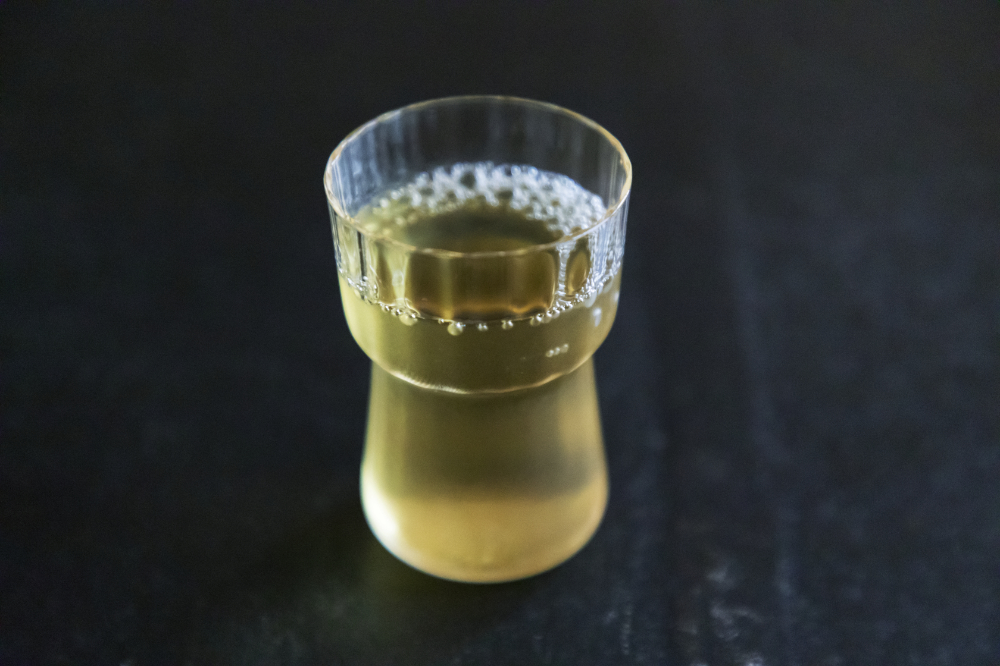
To accompany the Hitashi Karukan, we have a pan-fired green tea. While technically unfermented, it has a taste reminiscent of a semi-fermented tea like oolong tea and features a delightfully subtle flavor. We are served this tea cold.
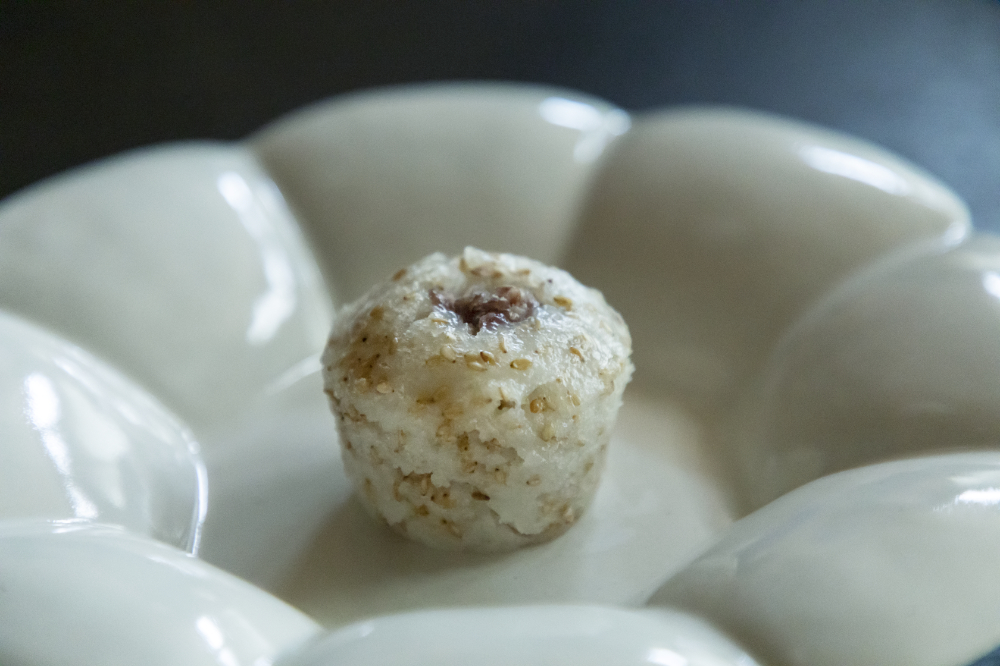
Our next confection is grilled karukan. A bean paste center is surrounded by karukan with sesame seeds kneaded into it. A huge fan of butter, Mizoguchi encourages us all to smear on as much cold butter as we like. The salty taste of the karukan shell combines wonderfully with the sweet bean paste and the rich, creamy butter.
This karukan creation is paired with a glass of nashi (Japanese pear) milk. Entirely sugar-free, it only highlights the sweetness and juiciness of the nashi, and the delectable creaminess of the milk.
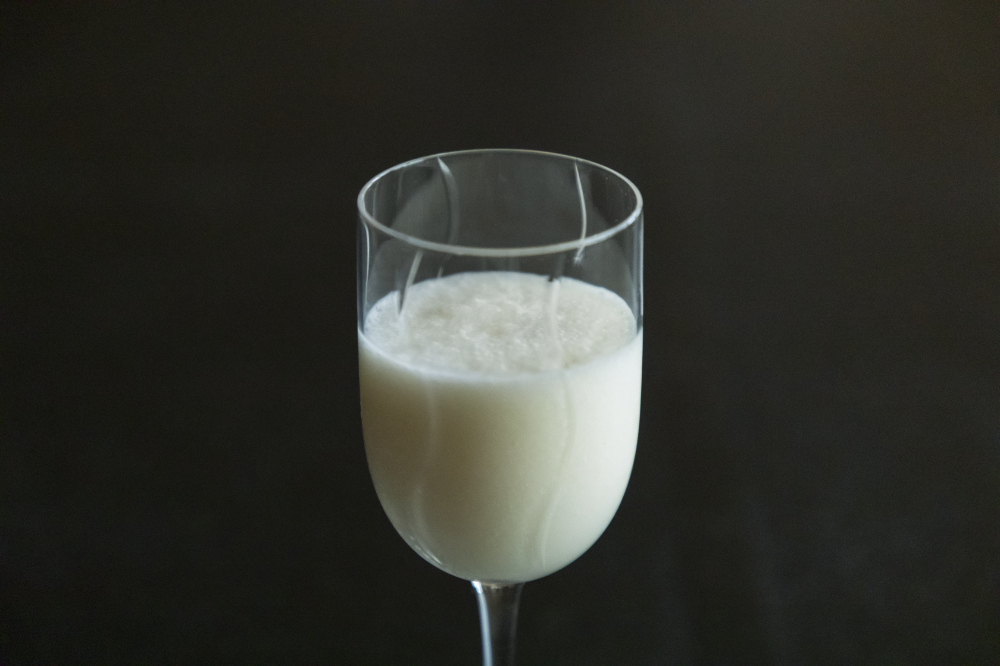
Our final karukan dish is visually stunning, featuring a more darkly-colored slice of karukan topped with custard cream and peach and sprinkled with grated cheese.
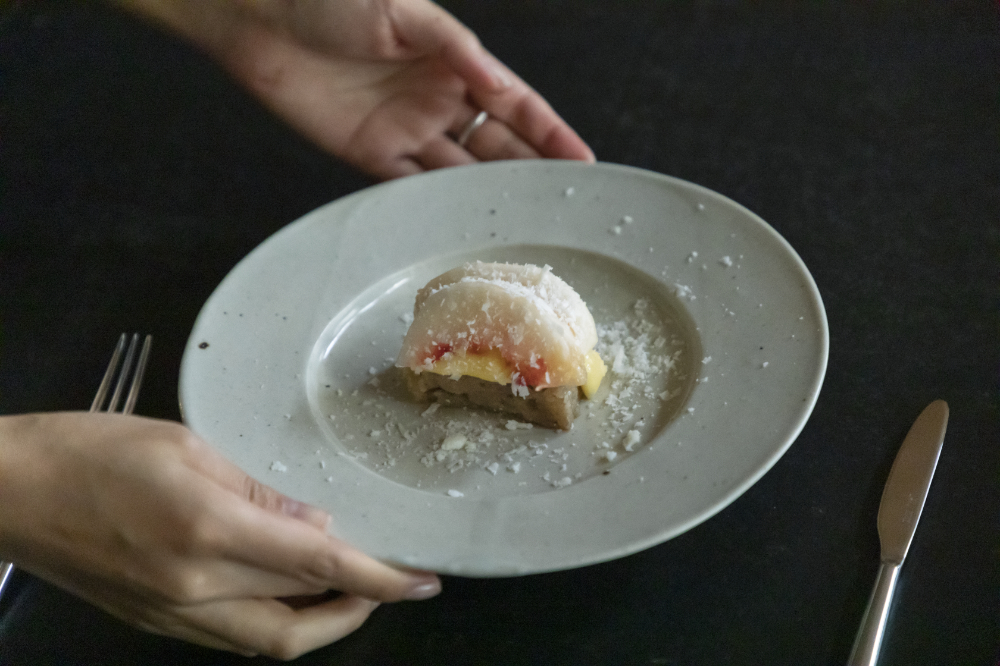
“This final karukan uses unrefined sugar,” Mizoguchi informs us. “I have also used rice flour from Kumamoto for this dish only. It’s fascinating just how much more elasticity it has.”
Mizoguchi has shown us just how flexible the humble karukan can be and that it can be every bit as colorful and pretty as the macarons those young women favored. Her love for karukan has touched us all.
The accompanying beverage to this last dish is a spicy cup of chai, with nothing but milk added. While demonstrating the broad range that confectionery and tea can traverse, Mizoguchi is consistent in her respect for the inherent flavors of her ingredients.
It is because she expresses, with total honesty and forthrightness, the various learnings of her life that the dining experience Mizoguchi offers through her confections and her tea is so stunningly creative and original, yet at the same time so familiar and comfortable. Rather than a stubborn obsession, one gets the sense that this is true love, a genuine expression of her adoration.
In the second half of this article, I speak to Miho Mizoguchi about how she came to open Kashiya Kokonotsu and ask her to expound a little on her culinary philosophy.
Kashiya Kokonotsu
A reservation-only tea salon where customers are served special multiple-dish confectionery courses created by proprietor Miho Mizoguchi. Many regular customers have become fans of the seasonal treats and fascinating stories Mizoguchi provides. In addition to her monthly wagashi course, she also offers a wide variety of other special experiences through her salon, including collaborations with other chefs, breakfasts, and her Personal Favorites series, in which she places the spotlight on one particular foodstuff.
See the below website for more details and reservation guidance.
kokonotsu-9.jugem.jp
www.instagram.com/_____9__/ (Instagram)
Photo: Norio Kidera
Text: Yoshiki Tatezaki
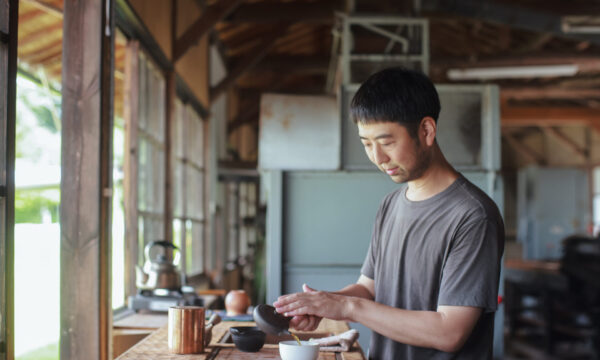
2024.09.20 Tea CraftsmenINTERVIEW
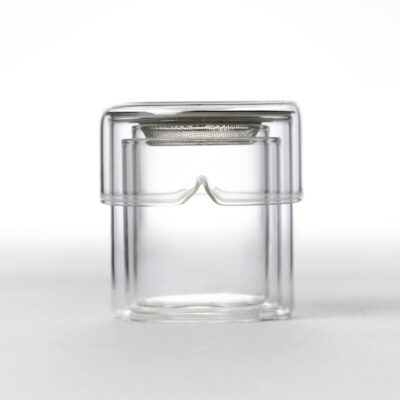
内容:フルセット(グラス3種、急須、茶漉し)
タイプ:茶器
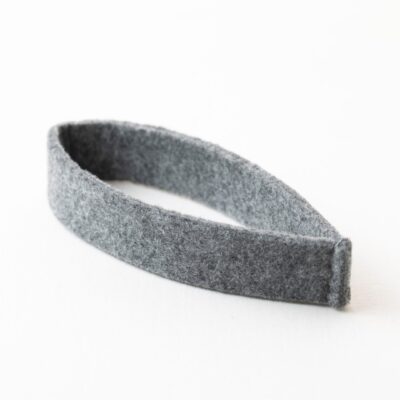
内容:スリーブ×1種(素材 ポリエステル 100%)
タイプ:カスタムツール